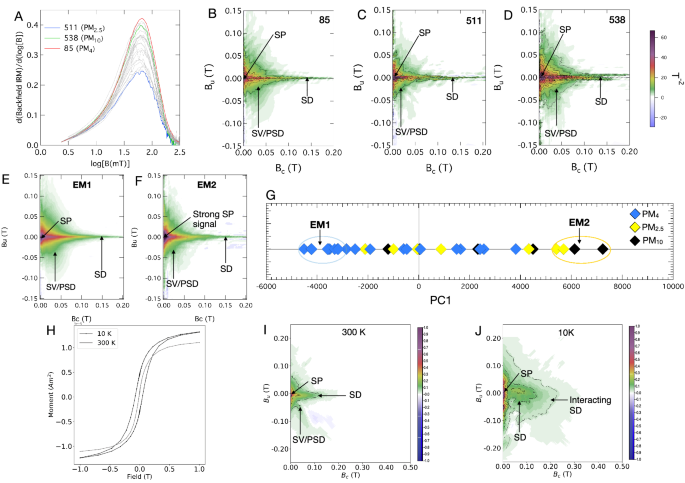2022-12-15 ケンブリッジ大学
研究チームは、地下のチケット売り場、プラットフォーム、運転室から採取したほこりを磁気を用いて分析し、新しいタイプの公害分析を行いました。磁気フィンガープリント法、3Dイメージング法、ナノスケール顕微鏡法を用いて、サンプルに含まれる粒子の構造、サイズ、形状、組成、磁気特性の特徴を明らかにしました。その結果、直径5~500ナノメートル、平均直径10ナノメートルのマグヘマイト粒子が大量に検出された。一部の粒子は、直径が100~2,000ナノメートルの大きなクラスターを形成していた。
鉄が酸化してマグヘマイトになるには時間がかかるため、この結果は、地下鉄全体、特に駅のプラットフォームでは換気が悪いため、汚染粒子が長時間浮遊していることを示唆している。
粒子の中には直径5ナノメートルというものもあり、吸い込むと血流に乗ってしまうほど小さいが、一般的な汚染物質のモニタリング方法では捕捉できないほど小さい。
他の研究では、アンダーグラウンドの汚染レベル全体とそれに伴う健康リスクについて調べていますが、粒子のサイズと種類を詳細に分析したのは今回が初めてです。研究者らは、地下鉄のトンネルから定期的にほこりを除去し、汚染レベルを磁気的に監視することで、地下鉄網全体の空気の質を改善できる可能性があると指摘しています。研究成果は、学術誌『Scientific Reports』に掲載されています。
<関連情報>
- https://www.cam.ac.uk/stories/london-underground-pollution
- https://www.nature.com/articles/s41598-022-24679-4
ロンドン地下鉄における空気中の酸化鉄ナノ粒子の磁気的および顕微鏡的調査 Magnetic and microscopic investigation of airborne iron oxide nanoparticles in the London Underground
H. A. Sheikh,P. Y. Tung,E. Ringe &R. J. Harrison
Scientific Reports Published:15 December 2022
DOI:https://doi.org/10.1038/s41598-022-24679-4

Abstract
Particulate matter (PM) concentration levels in the London Underground (LU) are higher than London background levels and beyond World Health Organization (WHO) defined limits. Wheel, track, and brake abrasion are the primary sources of particulate matter, producing predominantly Fe-rich particles that make the LU microenvironment particularly well suited to study using environmental magnetism. Here we combine magnetic properties, high-resolution electron microscopy, and electron tomography to characterize the structure, chemistry, and morphometric properties of LU particles in three dimensions with nanoscale resolution. Our findings show that LU PM is dominated by 5–500 nm particles of maghemite, occurring as 0.1–2 μm aggregated clusters, skewing the size-fractioned concentration of PM artificially to larger sizes when measured with traditional monitors. Magnetic properties are largely independent of the PM filter size (PM10, PM4, and PM2.5), and demonstrate the presence of superparamagnetic (< 30 nm), single-domain (30–70 nm), and vortex/pseudo-single domain (70–700 nm) signals only (i.e., no multi-domain particles > 1 µm). The oxidized nature of the particles suggests that PM exposure in the LU is dominated by resuspension of aged dust particles relative to freshly abraded, metallic particles from the wheel/track/brake system, suggesting that periodic removal of accumulated dust from underground tunnels might provide a cost-effective strategy for reducing exposure. The abundance of ultrafine particles identified here could have particularly adverse health impacts as their smaller size makes it possible to pass from lungs to the blood stream. Magnetic methods are shown to provide an accurate assessment of ultrafine PM characteristics, providing a robust route to monitoring, and potentially mitigating this hazard.


